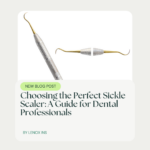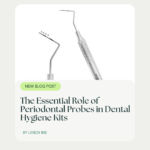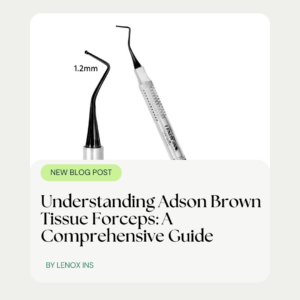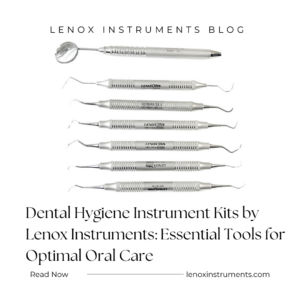Essential Tools for an Organized Hygienist Kit: A Guide to the Best Tools for Hygienist Kits
- lenoxinstro
- October 11, 2024
- Restorative
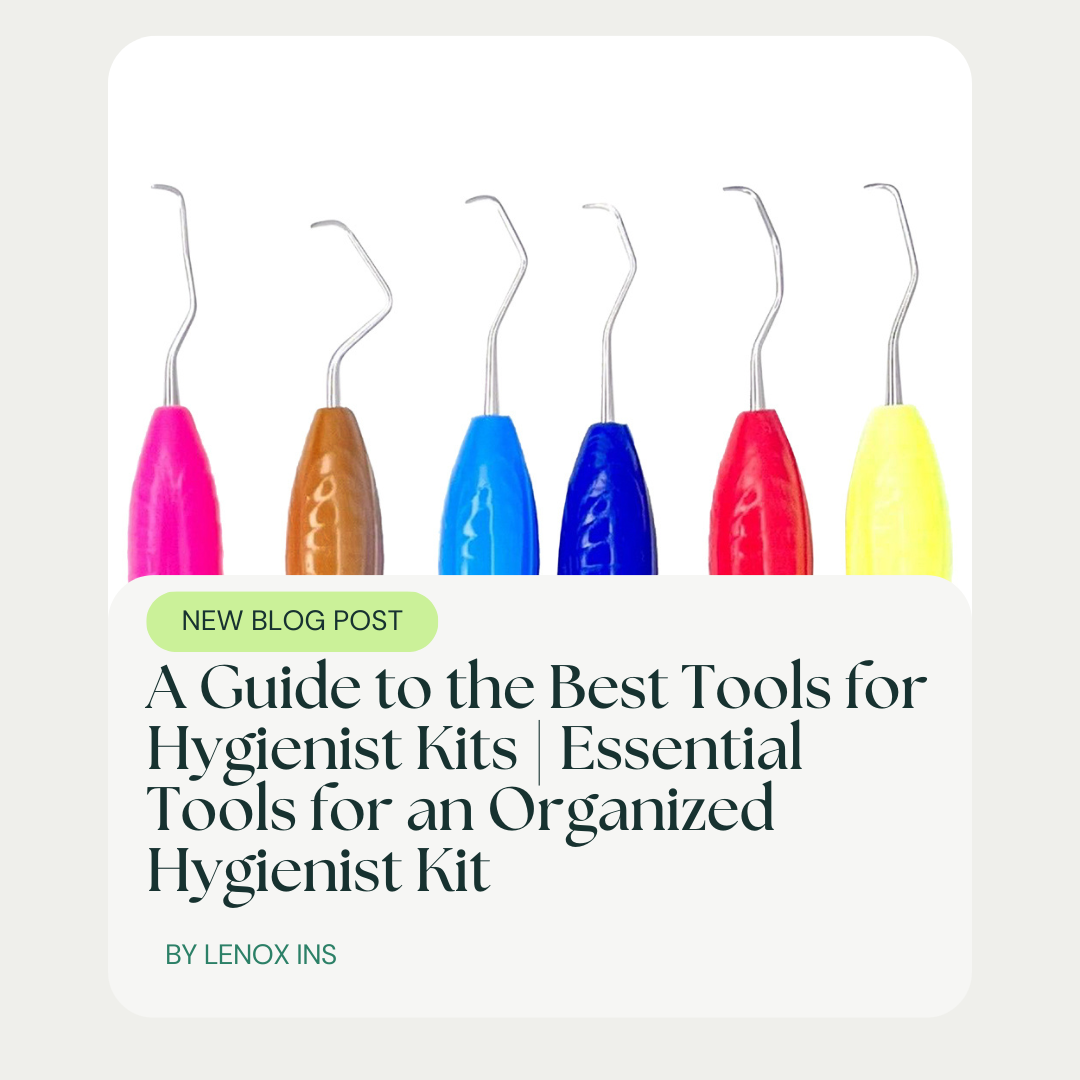
Every dental hygienist knows the frustration of fumbling through a disorganized kit during teeth cleaning procedures. An organized hygienist kit not only streamlines the process but also enhances the quality of care provided to patients. This guide will explore essential hand instruments, advanced diagnostic tools, and effective organization strategies to ensure that every hygienist can work efficiently. By following this advice, readers will reduce the stress of managing their tools and improve their workflow, ultimately leading to better patient outcomes and satisfaction.
Key Takeaways
- An organized hygienist kit improves workflow efficiency and patient care quality
- Proper tool accessibility minimizes delays and increases prompt attention to dental issues
- Regular maintenance of instruments ensures optimal performance and patient comfort during procedures
- Implementing color-coding systems enhances organization and quick identification of tools
- Staying informed about new technologies supports better patient care and effective kit management
Understanding the Importance of an Organized Hygienist Kit
An organized hygienist kit significantly enhances workflow efficiency by ensuring that essential tools, such as an electric toothbrush and periodontal instruments, are readily accessible. Proper organization directly impacts patient care, as it allows for timely exams and prompt attention to issues like gingivitis and tooth decay. Disorganized kits can lead to delays, increased stress, and potential oversight in treatment. Each aspect of the organization’s impact on hygiene practice will be discussed in the following sections.
How Organization Enhances Workflow Efficiency
An organized hygienist kit plays a crucial role in enhancing workflow efficiency within dental hygiene practices. When essential tools, such as periodontal instruments and items for monitoring tooth enamel health, are systematically arranged, hygienists can swiftly access what they need during examinations. This efficiency not only reduces wait times for patients but also minimizes the risk of overlooking potential issues, such as early signs of tooth loss or oral cancer, thereby ensuring comprehensive and effective care.
| Aspect | Impact |
|---|---|
| Tool Accessibility | Reduces time spent searching for instruments. |
| Patient Care | Allows for timely exams and interventions. |
| Risk Management | Minimizes chances of overlooking critical issues. |
| Stress Reduction | Creates a more organized working environment. |
The Connection Between Tool Organization and Patient Care
The connection between tool organization and patient care is evident in the efficiency of dental hygiene practices. When instruments are systematically arranged, tools such as dental floss, sterilization equipment, and tooth brushing aids can be quickly accessed, promoting timely assessments of the mouth and gums. This organized environment enhances the hygienist’s ability to deliver effective care, as they can focus on providing immediate attention to oral health issues, improving overall patient outcomes.
Common Issues Caused by Disorganized Kits
Disorganized hygienist kits can lead to significant problems in dental practices, impacting both the hygienist’s workflow and patient outcomes. When essential tools, such as toothpaste, periodontal instruments, and tongue scrapers, are misplaced or hard to find, it increases the likelihood of delays and mistakes. This disarray can prevent dental hygienists from effectively addressing patient needs, potentially allowing dental diseases to progress unnoticed and undermining the standard of care provided. hygiene instruments kit
An organized kit lays the foundation for success. Now, let’s explore the essential hand instruments every hygienist needs to excel in their work. hygiene instruments kit
Essential Hand Instruments for Every Hygienist
Selecting the right scalers and curettes is essential for effective treatment of periodontal disease, enabling hygienists to manage plaque and tartar efficiently. Dental mirrors play a crucial role in examinations, allowing for accurate visibility of hard-to-reach areas. Probes and explorers are vital tools for precise assessments of oral hygiene and potential issues. Moreover, maintaining the sharpness of hand instruments is key to ensuring optimal performance and patient comfort. Each of these aspects will be explored in the following sections.
Selecting the Right Scalers and Curettes
Selecting the right scalers and curettes is vital for managing calculus and bacteria effectively during hygiene procedures. These dental instruments are designed to facilitate the removal of plaque and tartar, ensuring that patients maintain optimal oral hygiene. Additionally, incorporating instruments that allow for the application of fluoride treatments can significantly enhance patients’ overall dental health, making the right choices indispensable for a hygienist’s kit.
The Role of Dental Mirrors in Examinations
Dental mirrors are indispensable tools in every hygienist kit, playing a vital role in dental cleaning procedures. They provide enhanced visibility, allowing hygienists to examine hard-to-see areas in the mouth, which is essential for identifying potential infection and other dental issues. By ensuring thorough examinations, dental mirrors contribute to effective diagnosis and treatment, ultimately improving patient outcomes.
| Tool | Function |
|---|---|
| Dental Mirrors | Enable better visibility for comprehensive examinations. |
| Hygienist Kit | Contains essential instruments for dental cleaning and patient care. |
| Infection Control | Critical for identifying issues before they escalate. |
Probes and Explorers for Accurate Assessments
Probes and explorers are essential hand instruments in a hygienist’s toolkit, providing the means for precise assessments of oral health. These tools enable hygienists to detect subtle changes in gum health and identify areas of plaque accumulation, which are crucial for preventing periodontal disease. By using probes and explorers effectively, dental hygienists can deliver thorough evaluations, ensuring that any potential issues are addressed promptly and enhancing overall patient care.
Importance of Sharpness in Hand Instruments
Maintaining the sharpness of hand instruments is crucial for the effectiveness and efficiency of dental hygiene practices. Dull instruments can lead to ineffective cleaning, increased patient discomfort, and a higher risk of injury for both the patient and the hygienist. Regularly sharpening and properly storing tools not only enhances performance but also fosters an organized hygienist kit, ensuring that hygienists can deliver quality care with confidence and precision during every appointment.
Tools are only part of the story. Next, hygienists must embrace advanced diagnostic tools to sharpen their skills and enhance patient care. Hygiene Instruments Kit of 10pcs
Incorporating Advanced Diagnostic Tools
Incorporating advanced diagnostic tools into a hygienist kit significantly enhances patient care and decision-making. The benefits of using digital radiography improve diagnostic accuracy, while intraoral cameras facilitate effective patient education by providing visual insights into oral health. Additionally, implementing caries detection devices allows for early identification of cavities, ensuring timely intervention and better treatment outcomes.
Benefits of Using Digital Radiography
Digital radiography offers several advantages that significantly enhance diagnostic capabilities in dental hygiene practices. This advanced technology provides immediate images, allowing hygienists to quickly identify oral health issues such as cavities or bone loss, leading to timely interventions. Additionally, the reduced radiation exposure associated with digital radiography improves patient safety, making it a preferred choice for modern dental practices.
- Immediate imaging for quick diagnosis.
- Reduced radiation exposure for patient safety.
- Ability to easily store and retrieve patient records.
Utilizing Intraoral Cameras for Patient Education
Utilizing intraoral cameras in dental hygiene practices offers significant benefits for patient education, as these devices provide real-time visual feedback during examinations. By capturing detailed images of a patient’s oral cavity, hygienists can clearly demonstrate areas of concern, such as cavities or gum disease, making it easier for patients to understand their oral health status. This visual approach enhances communication, empowering patients to take an active role in their dental care and make informed decisions about their treatment options.
Implementing Caries Detection Devices
Implementing caries detection devices in a hygienist kit serves as a valuable asset for enhancing patient care by identifying cavities at their earliest stages. These advanced tools utilize various technologies, such as fluorescence or digital imaging, to detect and visualize carious lesions that may not be visible through traditional examination methods. By integrating these devices, dental hygienists can provide timely interventions, significantly improving treatment outcomes and helping patients maintain their oral health.
- Enhances early detection of cavities.
- Utilizes advanced technologies for accurate diagnosis.
- Enables timely interventions to improve treatment outcomes.
Advanced diagnostic tools sharpen precision in dental care. Next, the right choice of ultrasonic scalers will enhance these benefits even further.
Choosing the Best Ultrasonic Scalers
Choosing the Best Ultrasonic Scalers
Understanding the various ultrasonic technologies available is crucial for selecting the right scaler. Key features, including power settings and ergonomic design, significantly impact performance. Furthermore, regular maintenance practices ensure longevity of the tools, contributing to optimal patient care. The following sections will provide insights on comparing ultrasonic technologies, essential features to consider, and effective maintenance tips.
Comparing Ultrasonic Technologies
When comparing ultrasonic technologies for hygienist kits, several key factors merit attention. These include power settings, tip designs, and frequency ranges, which significantly influence the efficiency of plaque removal and patient comfort. Hygienists should consider how these features align with their practice needs, as selecting the appropriate ultrasonic scaler can lead to enhanced performance and improved patient outcomes:
- Evaluate power settings for optimal plaque removal.
- Examine tip designs for access to different dental surfaces.
- Assess frequency ranges to match specific treatment goals.
Features to Look for in an Ultrasonic Scaler
When selecting an ultrasonic scaler for a hygienist kit, several features are crucial to ensure optimal performance and comfort during procedures. Key aspects include adjustable power settings, which allow hygienists to customize the intensity based on individual patient needs and specific dental challenges. Additionally, a lightweight and ergonomic design can significantly reduce hand fatigue during prolonged use, promoting better precision and control. These thoughtful considerations help hygienists deliver effective treatments while maintaining patient comfort and satisfaction.
Maintenance Tips for Longevity
To ensure the longevity of ultrasonic scalers, regular maintenance is essential. Hygienists should frequently check and clean the scaler’s tips to remove debris and prevent wear, which will maintain optimal performance during procedures. Additionally, scheduling routine professional servicing can help identify potential issues early, ensuring the scaler continues to deliver efficient and effective cleaning while extending its lifespan significantly. scalers
Selecting the right ultrasonic scaler is just the beginning. Knowing how to organize these tools effectively can make all the difference in your practice.
Effective Tool Organization Strategies
Effective tool organization is vital for maximizing the efficiency of a hygienist kit. This section will discuss strategies such as categorizing instruments for easy access, utilizing color-coding systems to simplify tool identification, optimizing storage solutions for mobility and convenience, and implementing sterilization protocols to ensure patient safety. Each strategy provides practical insights for enhancing workflow in dental hygiene practices.
Categorizing Instruments for Easy Access
Categorizing instruments for easy access is a fundamental strategy in maintaining an organized hygienist kit. By grouping tools such as periodontal instruments, scalers, and handpieces together, dental hygienists can quickly locate and utilize necessary items during procedures, minimizing downtime and enhancing patient care. This systematic approach not only streamlines workflow but also reduces the likelihood of errors, ensuring that hygienists can effectively address oral health concerns efficiently.
Utilizing Color-Coding Systems
Utilizing color-coding systems in a hygienist kit can greatly enhance organization and efficiency. By assigning specific colors to various tools—such as red for periodontal instruments, blue for scalers, and green for diagnostic tools—hygienists can quickly identify and access the necessary items during procedures. This visual aid not only saves time but also minimizes the chances of misplacing instruments, ultimately leading to improved patient care and a more streamlined workflow.
- Assign specific colors to categories of tools.
- Facilitate quick identification during procedures.
- Minimize the risk of misplacing instruments.
- Enhance overall workflow and patient care.
Storage Solutions for Mobility and Convenience
Implementing effective storage solutions in a hygienist kit greatly enhances both mobility and convenience during dental procedures. Portable cases, modular trays, or bag systems facilitate easy transport of essential tools to different treatment areas, ensuring hygienists always have what they need within reach. By organizing instruments in a manner that prioritizes accessibility, dental professionals can minimize disruptions and focus on delivering quality care, ultimately improving the efficiency of their practice.
Implementing Sterilization Protocols
Implementing sterilization protocols is a critical aspect of organizing a hygienist kit effectively. Ensuring that all instruments are properly sterilized not only promotes patient safety but also maintains the integrity of the tools. By adhering to industry standards for sterilization, dental hygienists can minimize the risk of cross-contamination and enhance overall patient trust in the care they receive, ultimately leading to improved clinical outcomes. For those looking into high-quality dental instruments, considering options like the hygiene instruments kit might be beneficial.
After organizing tools effectively, the next step is to ensure your hygienist kit remains ready for action. A well-maintained kit not only enhances efficiency but also fosters confidence in your practice. Hygienist kit
Keeping Your Hygienist Kit Up-to-Date
Staying updated on the latest tool innovations is vital for maintaining an organized hygienist kit. Investing in ergonomic instrumentation enhances comfort and performance, while participating in training opportunities ensures familiarity with new equipment. Additionally, budgeting for regular kit upgrades supports ongoing effectiveness. Each of these components plays a crucial role in enhancing patient care and efficiency in dental hygiene practices. hygiene instruments kit
Staying Informed on the Latest Tool Innovations
Staying informed on the latest tool innovations is crucial for dental hygienists aiming to enhance their practice. Engaging in continuing education and attending industry conferences provide valuable insights into new technologies and techniques. By integrating the latest advancements, such as digital tools or ergonomic instruments, hygienists can improve patient care and streamline workflows, ultimately fostering a more effective and efficient hygiene practice.
Investing in Ergonomic Instrumentation
Investing in ergonomic instrumentation is essential for dental hygienists looking to optimize their performance and maintain patient comfort. These tools are designed with the user in mind, promoting better hand positioning and reducing strain during prolonged procedures. For example, ergonomic scalers and curettes can significantly alleviate hand fatigue, enabling hygienists to provide effective care without compromising their own well-being, ultimately leading to improved patient outcomes and greater satisfaction in their practice.
Training Opportunities for New Equipment
Participating in training opportunities for new equipment is essential for maintaining an organized hygienist kit and ensuring efficiency in dental practices. Workshops, webinars, and hands-on demonstrations can help dental hygienists become familiar with the latest technologies and tools, enabling them to utilize these advancements effectively. This ongoing education not only enhances their skills but also boosts confidence in integrating new instruments into their hygiene practices, ultimately improving patient care and outcomes. hygiene instruments kit
- Engage in workshops to learn about new tools.
- Attend webinars for insights on innovative technologies.
- Participate in hands-on demonstrations to practice using new equipment.
Budgeting for Regular Kit Upgrades
Establishing a budget for regular kit upgrades is essential for dental hygienists aiming to maintain an organized and effective hygienist kit. By allocating funds each year for replacing outdated tools and incorporating new technologies, professionals can ensure their practice remains efficient and capable of providing optimal patient care. Regularly reviewing and adjusting the budget allows hygienists to prioritize essential instrument needs and make informed decisions regarding upgrades and innovations in their kits.
| Budgeting Considerations | Description |
|---|---|
| Annual Allocation | Set a specific amount each year for upgrades. |
| Instrument Needs Assessment | Review current tools and identify what requires replacement or upgrade. |
| Technology Integration | Incorporate new tools to enhance efficiency and patient care. |
Conclusion
An organized hygienist kit is critical for enhancing workflow efficiency and ensuring effective patient care. By incorporating essential tools such as scalers, mirrors, and diagnostic devices, hygienists can quickly address oral health issues, ultimately improving patient outcomes. Regular maintenance and strategic organization of these tools foster a confident and effective working environment. Prioritizing the right instruments and staying informed on innovations allows dental hygienists to deliver the highest standard of care while maintaining operational efficiency.







